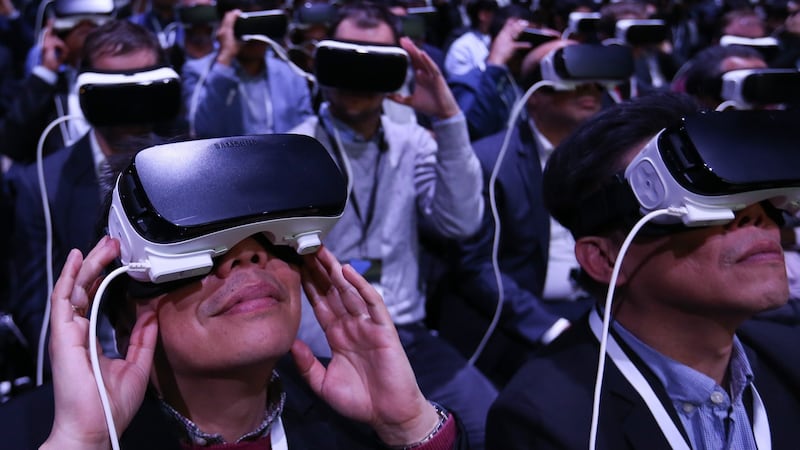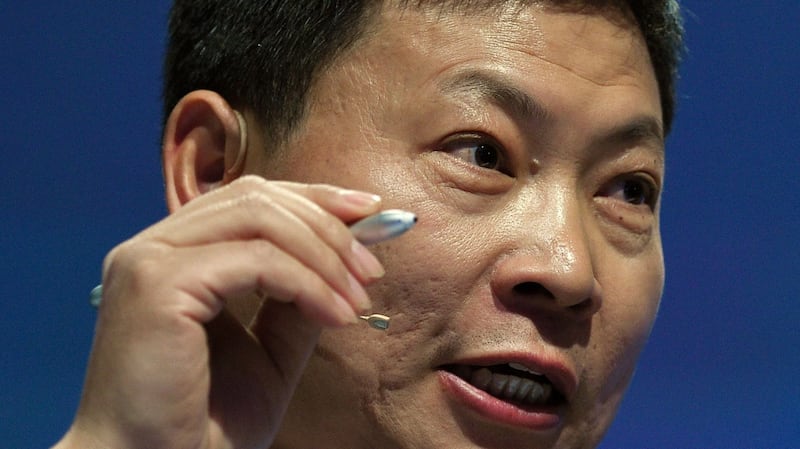Virtual reality dominated the headlines ahead of the opening of Mobile World Congress as mobile makers rushed to take make their mark with the new technology.
From Samsung’s virtual reality launch of the Galaxy S7 and S7 Edge to LG’s new headset, the immersive technology was on everyone’s minds.
With the show set to open today, the mobile companies were gearing up to grab headlines. But where new mobile handsets would have created much of the buzz around Mobile World Congress, things have moved on.


This year, virtual reality, 360 cameras and new hybrid tablets and laptops were making their debut as companies branched and took this year’s conference theme – Mobile is Everything – on board.
As journalists gathered for the congress, the big companies unveiled a host of new products. A modular Android phone, a rolling robot and a virtual reality headset were just some of the products unveiled by LG at its press conference.
Wide-angle lens
The much-anticipated LG G5 smartphone turned out to have more than just a removable battery; the handset is designed to mould itself to your whim, allowing you to add components such as a digital to analogue converter to boost your audio quality and a camera controller. More parts are expected.
The device also comes with two camera lenses on the back – one for capturing everyday photographs, the other for wide-angle shots.
The virtual reality headset marks LG’s entry into an increasingly popular market. Unlike rival Samsung, LG opted to make a headset that has its own display, rather than relying on your smartphone to provide the visuals.
However, phones are being pressed into service: as a touchscreen control for the headset. It’s expected to be more expensive than the Samsung Gear VR.
LG also tried to wow attendees with a robot ball and hand-held camera that makes 360 degree videos.
The company is trying to make its mark in an increasingly crowded mobile industry. It has fallen behind Samsung and other Android phone makers at the top end of the market and is facing increased competition from Chinese rivals such as Huawei and ZTE who are pitching more affordable phones with premium functions.
Two-in-one
Meanwhile Huawei unveiled a two-in-one laptop and tablet designed to take on the iPad Pro and Microsoft’s Surface devices, although the anticipated P9 smartphone failed to make an appearance.
The company had been expected to add to its phone range at the Mobile World Congress but its pre-show press event concentrated on the latest addition to the tablet lineup.
Dubbed the MateBook, the 12in tablet is powered by a sixth generation Intel CoreM processor and runs Windows 10.
Among its accessories are a keyboard cover, stylus and compact dock that expands the available ports on the device. It also uses the new USBC standard, making it thinner than the rival Surface Pro 4 made by Microsoft.
Outlining some of the most common PC headaches, including poor display, Huawei’s Richard Yu said the company was planning to bring a “new PC world” to consumers.
The device’s MatePen gets around potential accusations of “dumb stylus” by building in a laser pointer and presentation controls.
The MateBook also has a fingerprint reader that allows you to assign different fingerprints to start up various accounts, and an all-in-one compact MateDock. The tablet has built-in dual speakers with Dolby audio, and a noise cancelling headset that charges through the MateBook.
Intel’s Kirk Skaugen outlined the benefits of the device, pinpointing two-in-ones as a fast-growing category, second only to phablets: large screened mobile phones that are a cross between phones and tablets.











